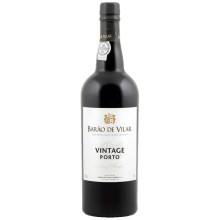



Portwein aus einer einzigen außergewöhnlich guten Ernte, die in großen Holzhüllen gealtert und in den letzten 2 oder 3 Jahren abgefüllt wurde.Während der Alterung erweicht der Wein und verliert langsam seine dunkle Farbe, gewinnt Struktur und Komplexität
Die Barão de Vilar - Vinhos, S.A. ist das jüngste Unternehmen von Port Wine, das im Januar 1996 aus einem Bestand an Weinen gebildet wurde, die von Fernando Luiz van Zeller erworben wurden, zu seinen beiden Söhnen Fernando und Álvaro.
Seine soziale Konfession erholt einen nobiliárquico Titel von D. Maria II von Portugal Cristiano Nicolau Kopke, der 1. Baron von Vilar, im Jahre 1836, dass, durch Abstieg, im direkten Besitz der Familie

Sicherheitsrichtlinie

Max. 10 Werktage Lieferzeit

Rücknahmegarantie
 Keine Bewertung im Moment
Keine Bewertung im Moment